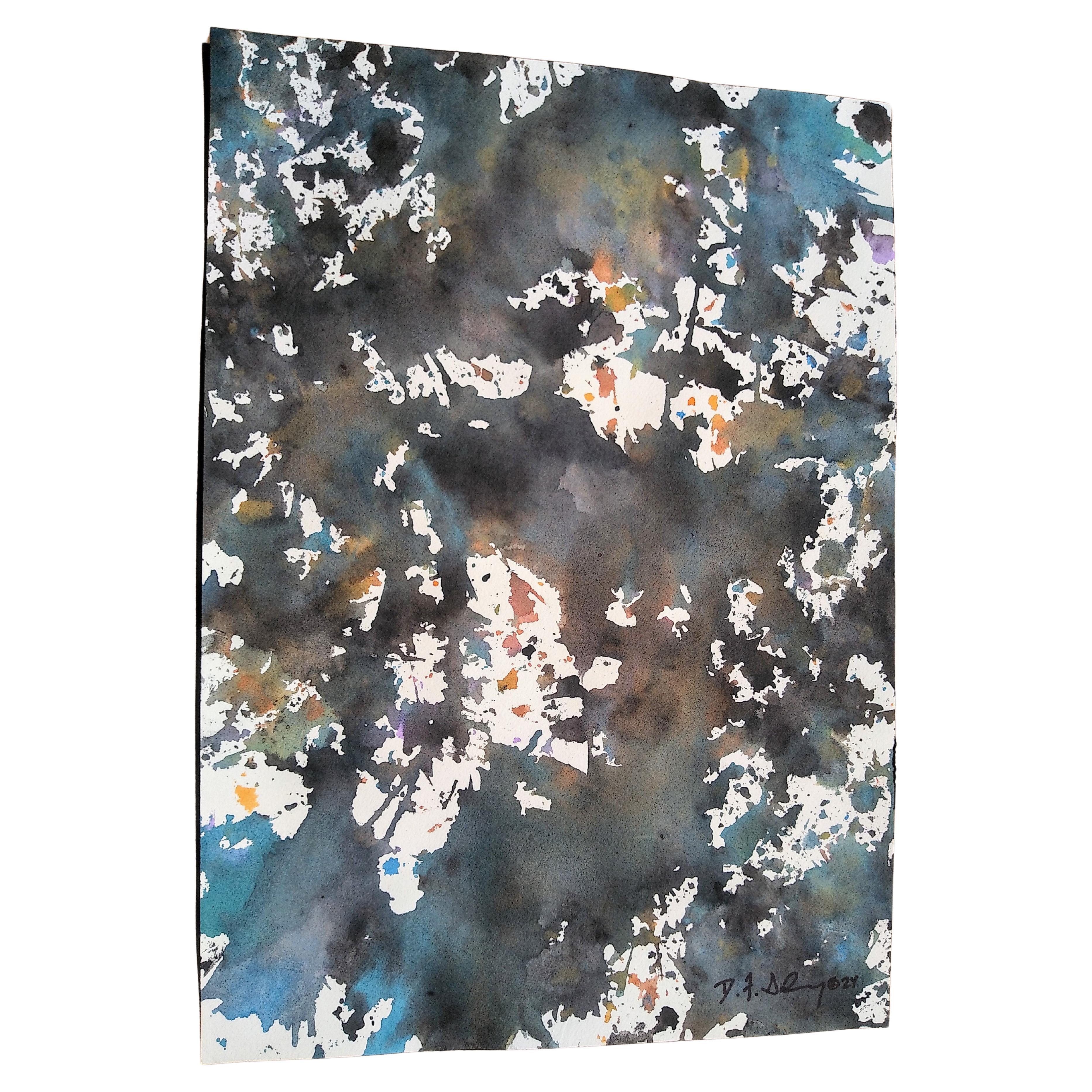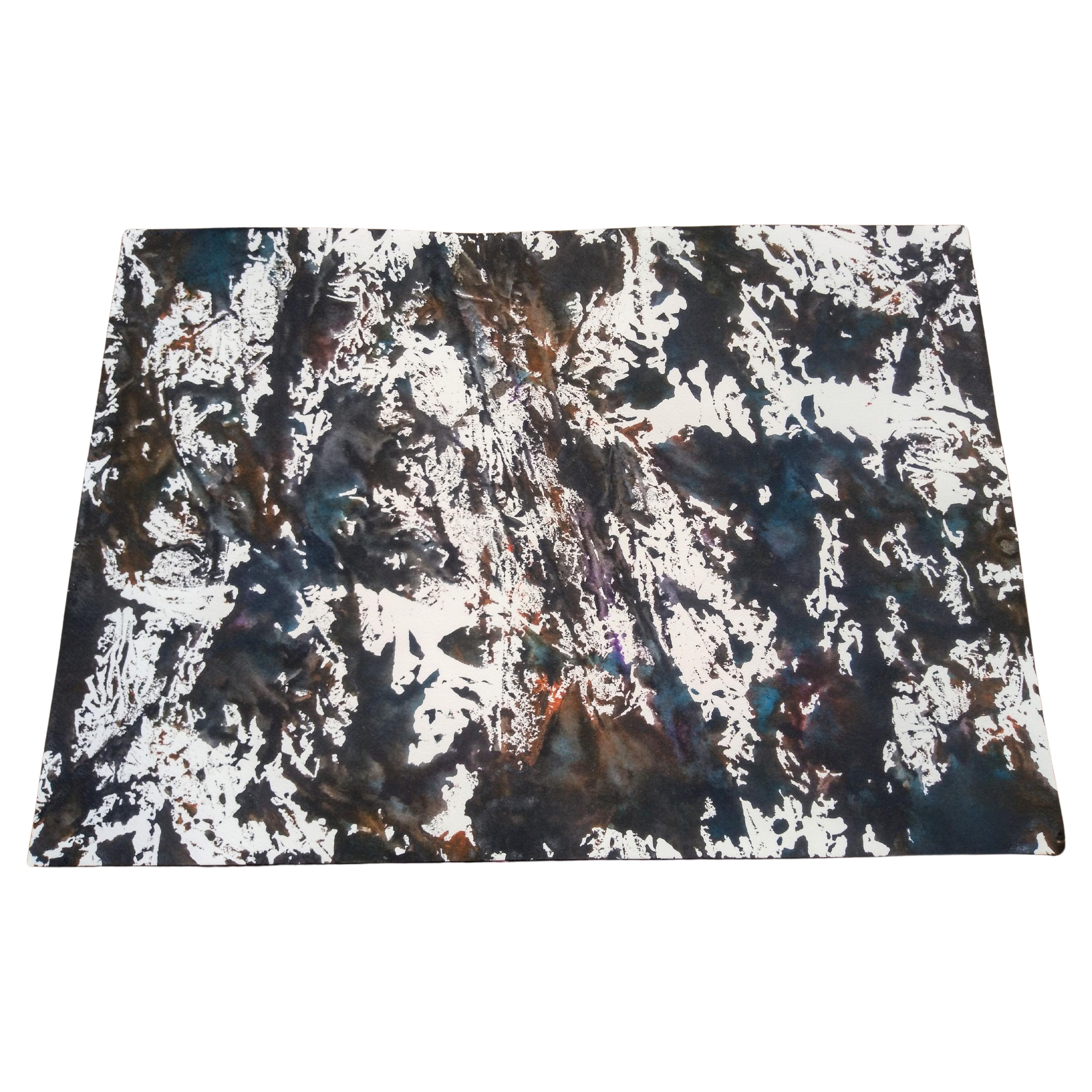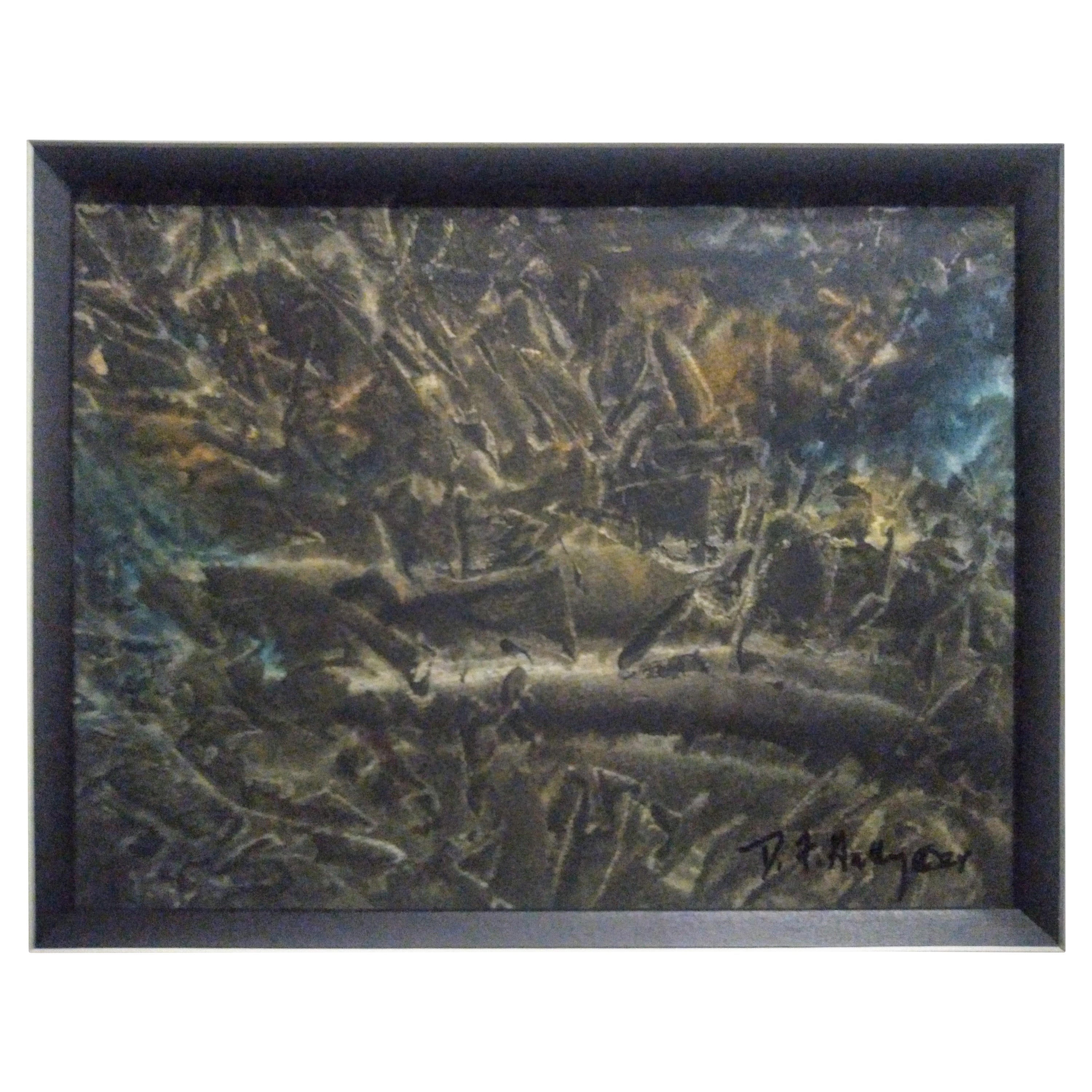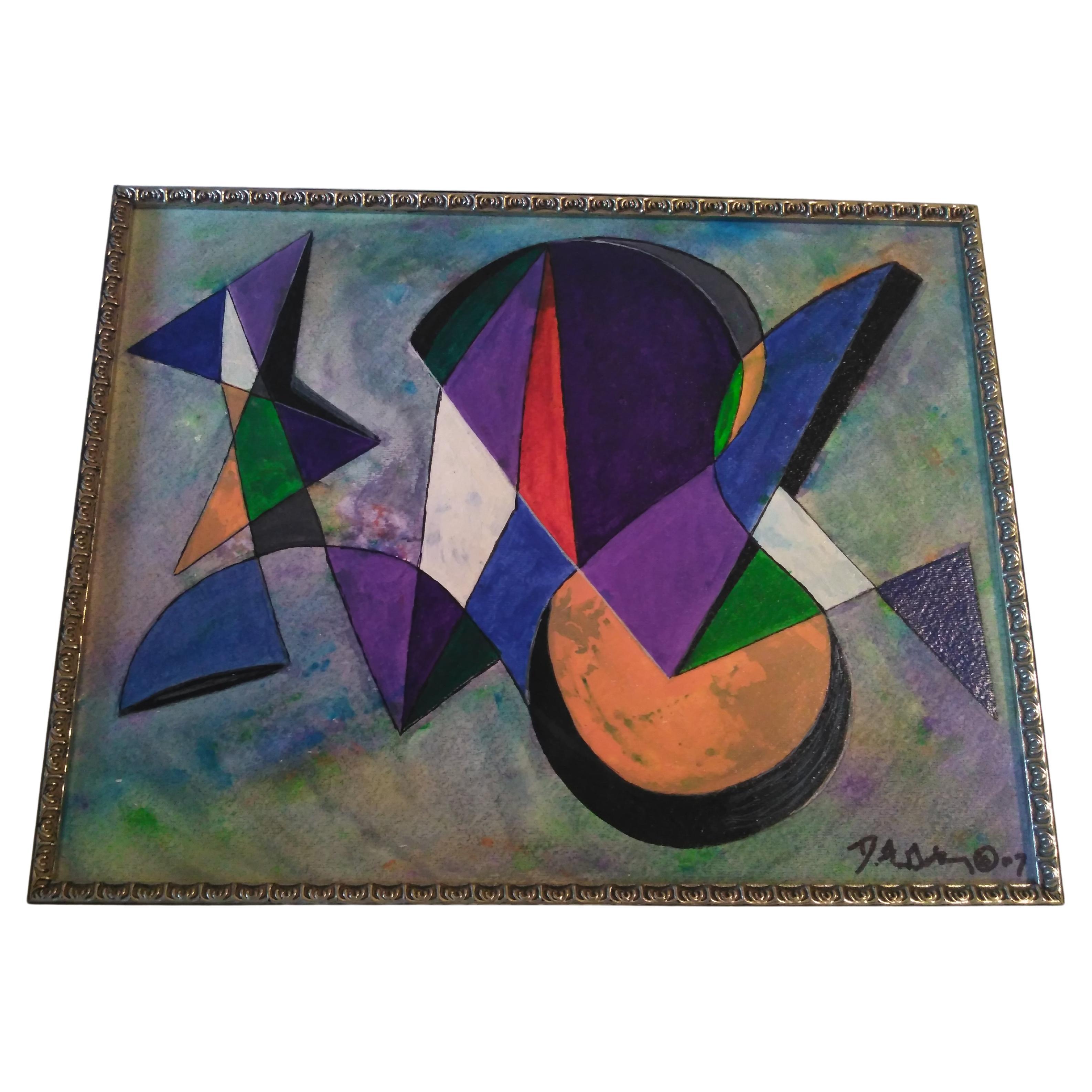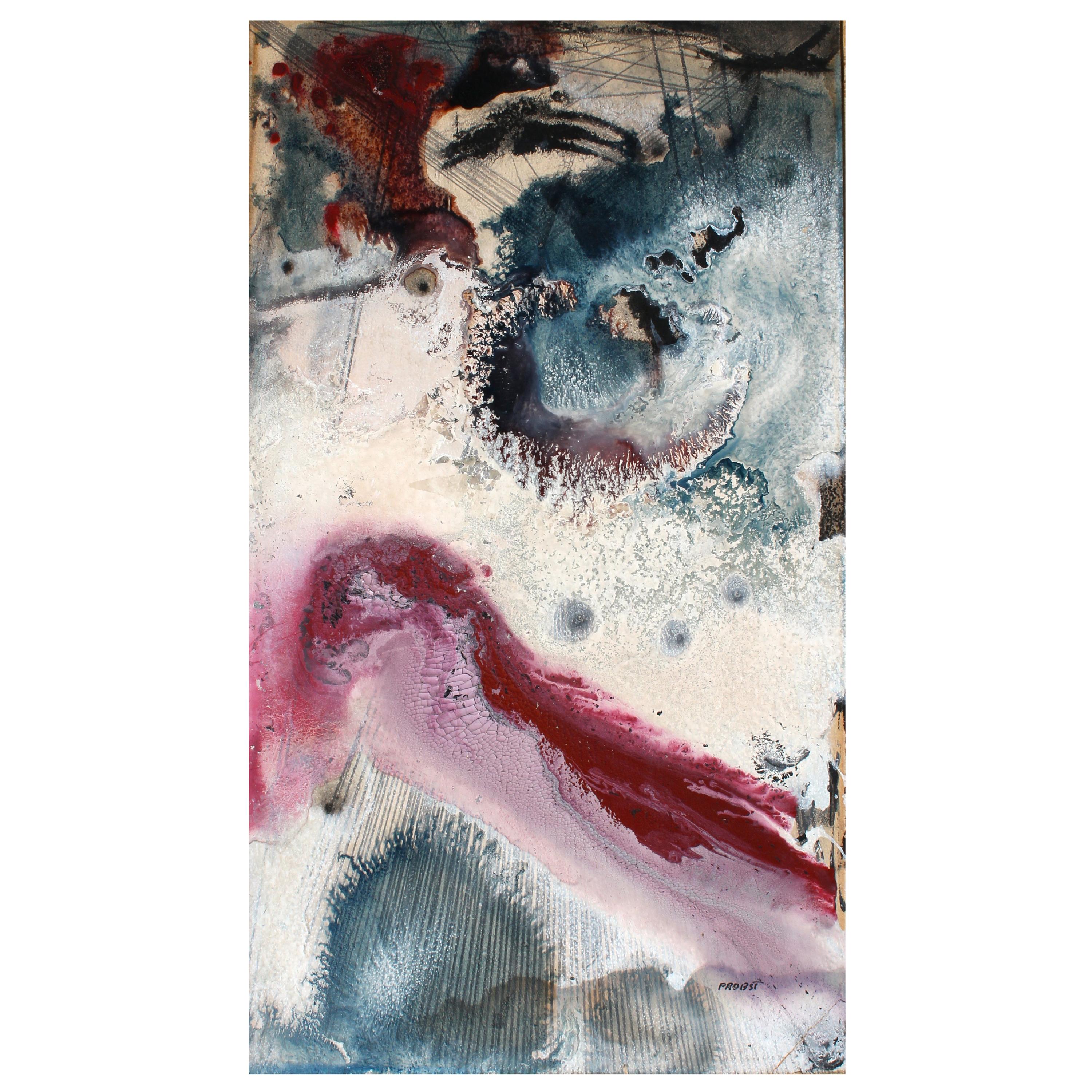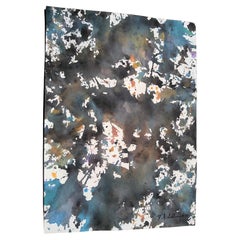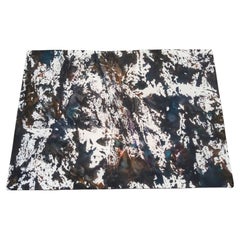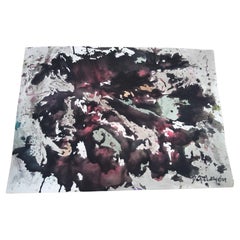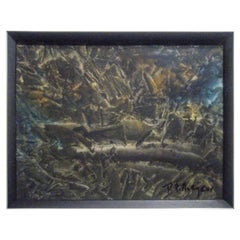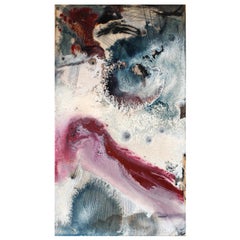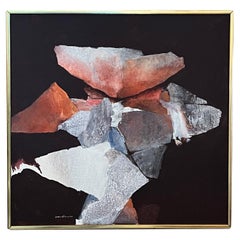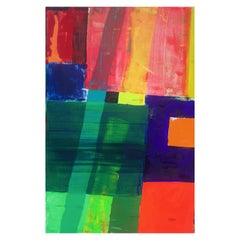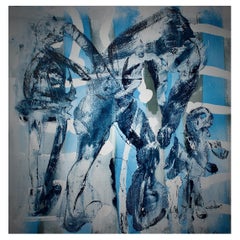Want more images or videos?
Request additional images or videos from the seller
1 of 7
David F. Gatling Acrylic on Arches paper
$2,400
£1,808.93
€2,090.79
CA$3,391.19
A$3,706.69
CHF 1,952.22
MX$45,577.32
NOK 24,397.42
SEK 22,953.16
DKK 15,609.06
About the Item
David F. Gatling began painting in 2006 at the Westheimer Antique Flea Market. His painting are in many collections and businesses.
This effort is titled
"Working Underground"
It's acrylic on Arches paper.
It an abstraction piece that uses positive and negative space to create light and darkness in a 3D form.
- Dimensions:Height: 13 in (33.02 cm)Width: 14 in (35.56 cm)Depth: 0.016 in (0.41 mm)
- Materials and Techniques:
- Place of Origin:
- Period:
- Date of Manufacture:2024
- Production Type:New & Custom(One of a Kind)
- Estimated Production Time:Available Now
- Condition:
- Seller Location:Pasadena, TX
- Reference Number:1stDibs: LU867140204662
About the Seller
4.6
Gold Seller
Premium sellers maintaining a 4.3+ rating and 24-hour response times
Established in 1999
1stDibs seller since 2009
1,542 sales on 1stDibs
Typical response time: 2 hours
- ShippingRetrieving quote...Shipping from: Pasadena, TX
- Return Policy
Authenticity Guarantee
In the unlikely event there’s an issue with an item’s authenticity, contact us within 1 year for a full refund. DetailsMoney-Back Guarantee
If your item is not as described, is damaged in transit, or does not arrive, contact us within 7 days for a full refund. Details24-Hour Cancellation
You have a 24-hour grace period in which to reconsider your purchase, with no questions asked.Vetted Professional Sellers
Our world-class sellers must adhere to strict standards for service and quality, maintaining the integrity of our listings.Price-Match Guarantee
If you find that a seller listed the same item for a lower price elsewhere, we’ll match it.Trusted Global Delivery
Our best-in-class carrier network provides specialized shipping options worldwide, including custom delivery.More From This Seller
View AllDavid F. Gatling Acrylic on Arches paper
Located in Pasadena, TX
Outsider artist David F. Gatling has been painting since 2005. He has sold his artworks to businesses, collectors and everyday people. His abstracts have hints of color that plays on...
Category
21st Century and Contemporary American Paintings
Materials
Acrylic, Paper
David F. Gatling Acrylic on Arches paper
Located in Pasadena, TX
Houston artist David Gatling is an outsider in the art world. He taught himself the art of painting. His art is collected by some of the top collectors nationally.
This piece is tit...
Category
21st Century and Contemporary American Paintings
Materials
Acrylic, Paper
David F. Gatling Acrylic on Arches paper
Located in Pasadena, TX
David F. Gatling is an outsider artist hailing from Houston, Texas. He began painting using watercolor in 2005. His art is in collections, businesses and law offices.
This is an ac...
Category
21st Century and Contemporary American Paintings
Materials
Acrylic, Paper
D.F. Gatling Acrylic on Arches paper
Located in Pasadena, TX
D.F. Gatling is an outsider art hailing from Houston, Texas. His art is collected by businesses and collectors. His abstract works play with positive and negative space to create 3D ...
Category
21st Century and Contemporary American Paintings
Materials
Acrylic, Paper
Untitled David F. Gatling Mixed Media on paper
Located in Pasadena, TX
David F. Gatling is an outsider artist who got his start in the art world in Houston, Texas. This is an early work of the artist. It's watercolor and acrylic on paper. It displays br...
Category
Early 2000s American Modern Paintings
Materials
Acrylic, Paper
Kimberly Gonzalez acrylic painting
Located in Pasadena, TX
This is a nice depiction of drip painting by Kimberly Gonzalez. She does it in an abstract way thus creating textures and fluidity in this painting. It's an acrylic on canvas work an...
Category
21st Century and Contemporary American Modern Paintings
Materials
Canvas, Acrylic
You May Also Like
Joechim 'Jack' Probst Painting on Board
Located in Sharon, CT
A 'New York School' Abstractionist. Probst (1913-1980) was a notorious West Village bohemian painter, a friend and influence on Franz Kline, according to an essay by Peter Hastings F...
Category
Mid-20th Century American Expressionist Paintings
Materials
Paint
Jan Wunderman (American 1921-2014) "Tachee II": Acrylic on Canvas
Located in San Francisco, CA
a good example of American Abstract Expressionism by established contemporary artist Jan Wunderman, depicting stacked asymmetrical rock-like forms, which is rooted in the artist's no...
Category
Vintage 1970s American Expressionist Paintings
Materials
Acrylic
Mixed Media Painting by Steven Colucci
By John Byard
Located in New York City, NY
Steven Colucci’s iconoclastic approach to performance and the visual arts
have not only long blurred the boundaries between these disciplines, but have
challenged its most basic assumptions. The title of this show references a
most rudimentary dance move --the plié --and our assumptions of what to
expect in relation to this. Also the suggestion that we can simply press a
button and a preconceived outcome will be courteously delivered --a form of
prefabricated belief in itself. Steven Colucci’s artwork turns such basic
assumptions on their heads. Finding early inspiration in the New York school
of abstract expressionists such as Jackson Pollock with his action painting,
and then further by his professor --a then young Vito Acconci while studying
at the School of Visual Arts, Steven Colucci went from exploring the raw
existentialist experimentation of New York’s early painting and performance
scenes, to investigating the other end of the spectrum --the rigorously
measured and controlled disciplines of pantomime and ballet; studying in
Paris under the tutelage of world-famous Marcelle Marceau, and engaging
with the concepts of dramatic movement pioneer and intellectual Etienne
Decroux. Colucci has explained the difference between the extremes of
pantomime and dance as being that pantomime forces movement via an
internal capacity --movement directed inward to the core of one’s self --a
source requiring extreme mental and physical control. Dance by contrast is
an external expression; likewise requiring great precision, although instead
an extension of self or sentiment that projects outwardly. While such
historical ‘movement’ disciplines serve as foundation blocks for Steven’s
artistic explorations, it is the realm in between that he is best known for his
contributions --an experimental movement and performance art that
simultaneously honors, yet defiantly refutes tradition; rejecting a
compartmentalization regarding art and movement, yet incorporating its
elements into his own brand of experimental pastiche. Colucci’s performance
works manifest as eerily candy-coated and familiar, yet incorporate
unexpected jags of the uncanny throughout, exploiting a sort of coulrophobia
in the viewer; an exploration of a cumulative artifice that binds human
nature against its darker tendencies; highlighting traditions of artifice itself -
the fabricated systemologies that necessitate compartmentalization in the
first place.
It is evident in Steven Colucci’s paintings that he has established a uniquely
distinctive pictorial vocabulary; a strong allusion to --or moreso an extension
of --his performance works. Colucci’s paintings depict a sort of kinetic
spectrum, or as he refers to them “a technical expression of physicality and
movement”. Whereas the French performance and visual artist Yves Klein
used the human body as a “paint brush” to demarcate his paintings and
thereby signify a residue of performance, Colucci’s utilization of nonsensical
numbers and number sequences taken from dance scores, as well as heat-
induced image abstraction depicting traces of movement likewise inform his
vocabulary. In the strand of the choreographed, yet incorporating moments of
chance, Colucci’s paintings represent an over arching structure; a rhythm of
being and state, yet detail erratic moments --moments that denote a certain
frailty --the edge of human stamina. Colucci’s paintings dually represent a
form of gestural abstraction --and also the reverse of this --a unique
anthropomorphization of varying states of movement – that sometimes
present as a temperature induced color field, at others are juxtapositions of
movement and depictions of physical gestural images themselves. Colucci’s
use of vernacular and found materials such as cardboard evoke his mastery of
set design, and also reference a sort of collective experience of urbanity and
the ephemeral. Such contradictions seem to permeate not only Steven
Colucci’s artwork, but also are reflected in his person – one who grew up in
New York’s Bronx during a zeitgeist moment in visual and performing arts in
the 1960s – one who shifts with ease from happenings and experiments in
New York City, to his meticulously choreographed megaproductions at
Lincoln Center or starring in the Paris ballet...
Category
2010s Paintings
Materials
Acrylic
Mixed Media Painting by Steven Colucci, Sea Series
By Jackson Pollock
Located in New York City, NY
Steven Colucci’s iconoclastic approach to performance and the visual arts have not only long blurred the boundaries between these disciplines, but have challenged its most basic assumptions. The title of this show references a most rudimentary dance move -- the plié -- and our assumptions of what to expect in relation to this. Also the suggestion that we can simply press a button and a preconceived outcome will be courteously delivered -- a form of prefabricated belief in itself. Steven Colucci’s artwork turns such basic assumptions on their heads. Finding early inspiration in the New York school of abstract expressionists such as Jackson Pollock with his action painting, and then further by his professor -- a then young Vito Acconci while studying at the School
of Visual Arts, Steven Colucci went from exploring the raw existentialist experimentation of New York’s early painting and performance scenes, to investigating the other end of the spectrum -- the rigorously measured and controlled disciplines of pantomime and ballet; studying in Paris under the tutelage of world-famous Marcelle Marceau, and engaging with the concepts of dramatic movement pioneer and intellectual Etienne Decroux. Colucci has explained the difference between the extremes of pantomime and dance as being that pantomime forces movement via an internal capacity -- movement directed inward to the core of one’s self -- a source requiring extreme mental and physical control. Dance by contrast is an external expression; likewise requiring great precision, although instead an extension of self or sentiment that projects outwardly. While such historical ‘movement’ disciplines serve as foundation blocks for Steven’s artistic explorations, it is the realm in between that he is best known for his contributions -- an experimental movement and performance art that simultaneously honors, yet defiantly refutes tradition; rejecting a compartmentalization regarding art and movement, yet incorporating its elements into his own brand of experimental pastiche. Colucci’s performance works manifest
as eerily candy-coated and familiar, yet incorporate unexpected jags of the uncanny throughout, exploiting a sort of coulrophobia in the viewer; an exploration of a cumulative artifice that binds human nature against its darker tendencies; highlighting traditions of artifice itself -- the fabricated systemologies that necessitate compartmentalization in the first place.
It is evident in Steven Colucci’s paintings that he has established a uniquely distinctive pictorial vocabulary; a strong allusion to -- or moreso an extension of -- his performance works. Colucci’s paintings depict a sort of kinetic spectrum, or as he refers to them “a technical expression of physicality and movement”. Whereas the French performance and visual artist Yves Klein used the human body as a “paint brush” to demarcate his paintings and thereby signify a residue of performance, Colucci’s utilization of nonsensical numbers and number sequences taken from dance scores, as well as heat-induced image abstraction depicting traces of movement likewise inform his vocabulary. In the strand of the choreographed, yet incorporating moments of chance, Colucci’s paintings represent an over arching structure; a rhythm of being and state, yet detail erratic moments -- moments that
denote a certain frailty -- the edge of human stamina. Colucci’s paintings dually represent a form of gestural abstraction -- and also the reverse of this -- a unique anthropomorphization of varying states of movement -- that sometimes present as a temperature induced color field, at others are juxtapositions of movement and depictions of physical gestural images themselves. Colucci’s use of vernacular and found materials such as cardboard evoke his mastery of set design, and also reference a sort of collective experience of urbanity and the ephemeral. Such contradictions seem to permeate not only Steven Colucci’s artwork, but also are reflected in his person -- one
who grew up in New York’s Bronx during a zeitgeist moment in visual and performing arts in the 1960s -- one who shifts with ease from happenings and experiments in New York City, to his meticulously choreographed megaproductions at Lincoln Center or starring in the Paris ballet...
Category
2010s Paintings
Materials
Acrylic
Rythmic Abstract Watercolor by Barry Bleach
By Barry Bleach
Located in Pasadena, CA
Abstract watercolor in warm colors and felt tip marker on paper. The piece is framed in a black lacquer wood frame and mounted on a blue mat background. Signed and dated 1979.
Category
20th Century American Paintings
Materials
Wood, Paper
Good Mood Acrylic Painting on Paper Ready to Hang
Located in Neuss, NW
Abstract painting in wild and powerful strokes. Ready to hang, framed with a passepartout in a handcrafted ash wood picture frame behind anti-reflective acrylic glass.
Size withou...
Category
Late 20th Century Paintings
Materials
Acrylic, Ash, Paper
